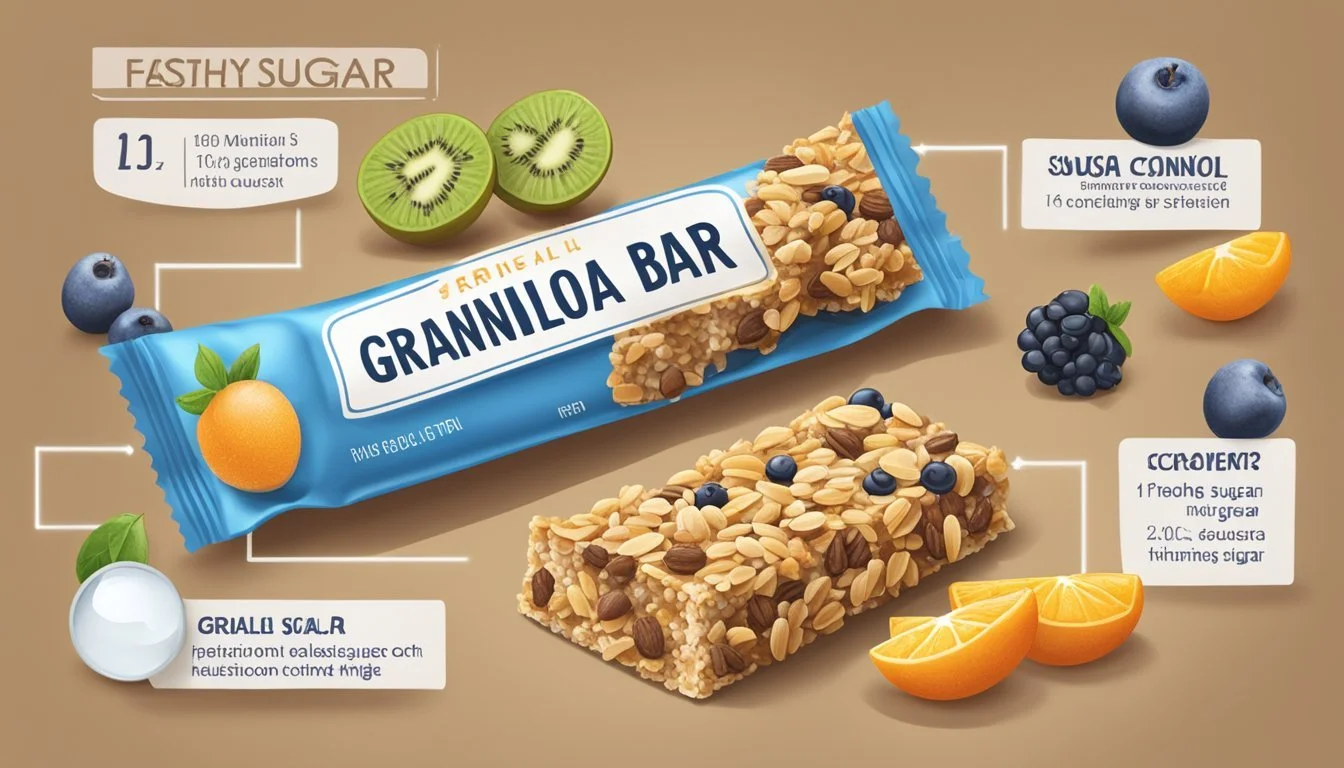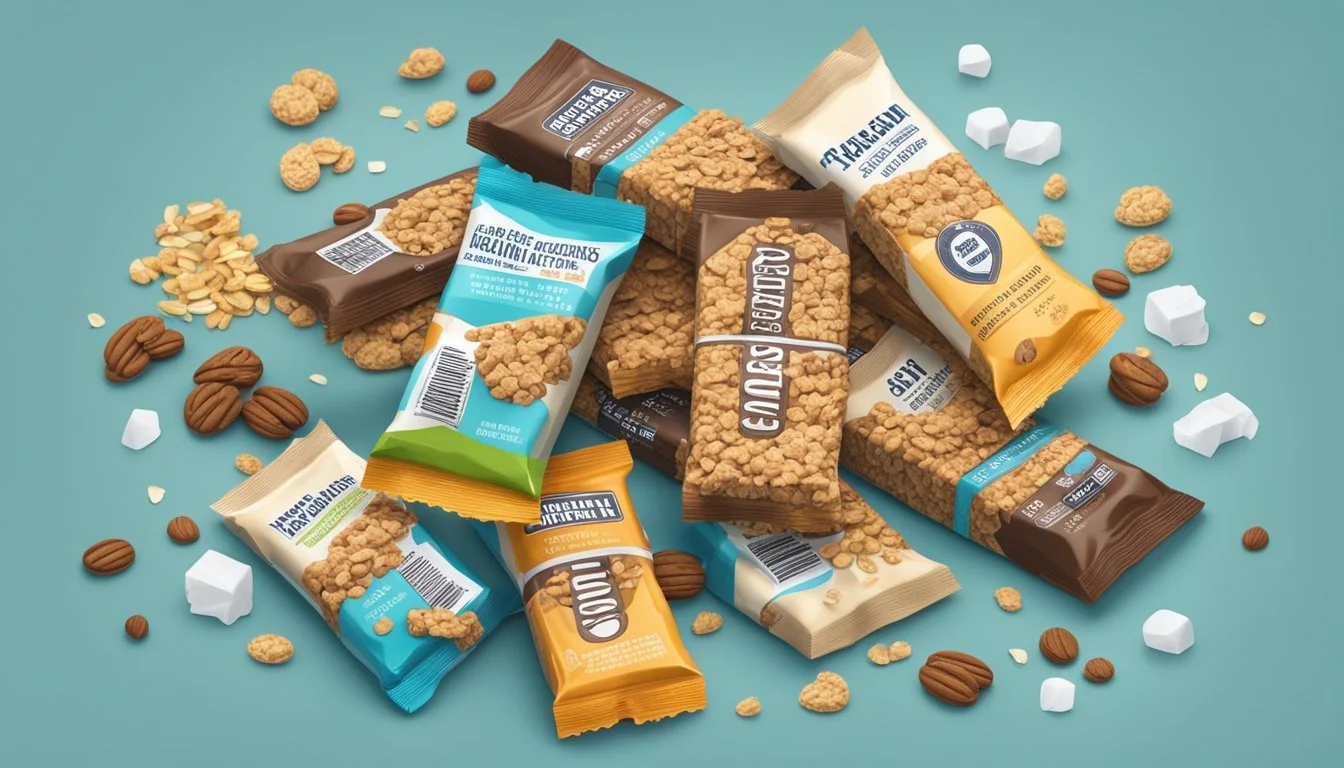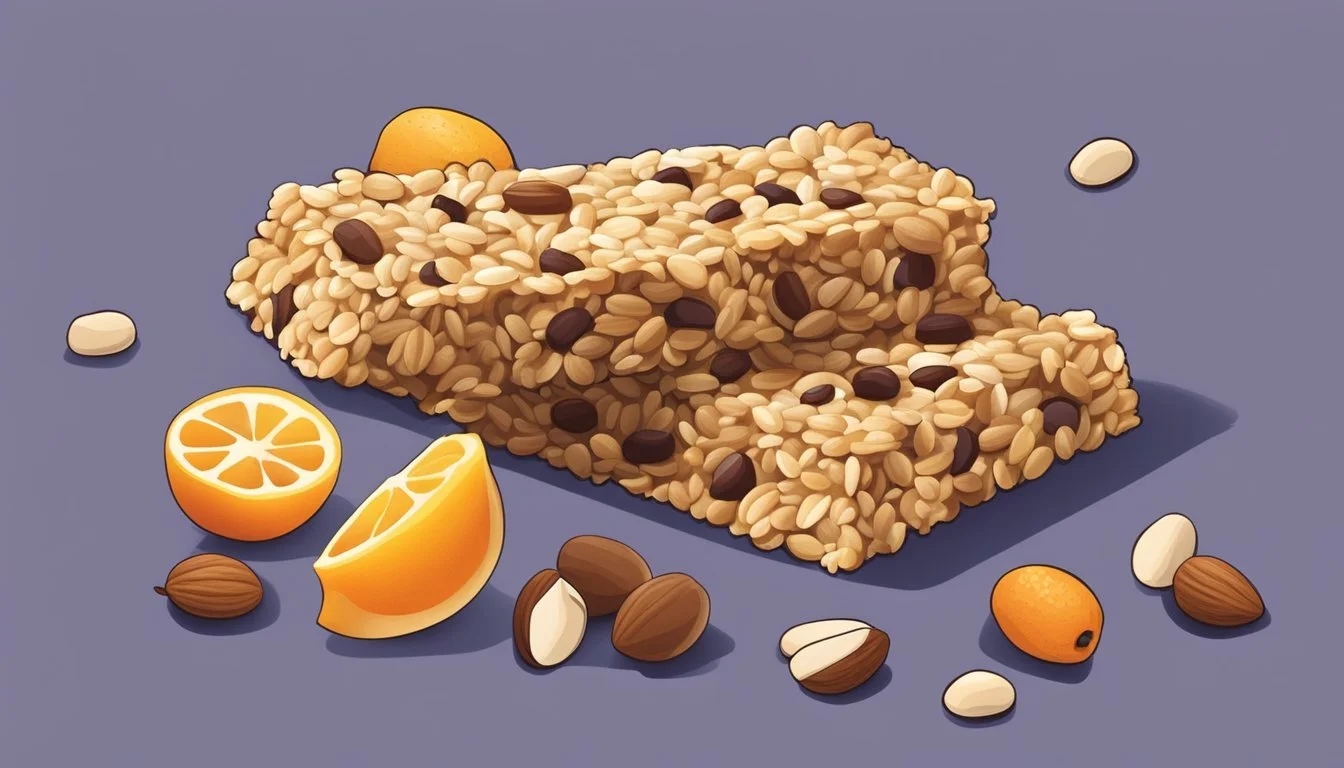Are Granola Bars a Healthy Snack or a Sugary Deception?
Unwrapping the Nutrition Facts
Granola bars are often marketed as the quintessential healthy snack, ideal for on-the-go nutrition or a quick energy boost. They are convenient, portable, and come in a variety of flavors and textures, catering to a wide array of taste preferences. The perception of granola bars as a nutritious choice stems from their common ingredients such as oats, nuts, and dried fruit, all of which offer inherent health benefits such as fiber, protein, and essential vitamins.
However, not all granola bars are created equal. The nutritional value can vary significantly depending on the brand and the specific ingredients used. Some bars are indeed packed with wholesome ingredients and minimal added sugars, making them a solid choice for a health-conscious individual. On the other hand, many contain high levels of added sugars and are low in fiber and protein, aligning them more closely with candy bars than with the components of a balanced diet.
When considering whether granola bars are a healthy snack or a sugary deception, one must look beyond the marketing and examine the nutrition label. The amount of added sugar, type of sweeteners used, and the presence of whole grains and protein are crucial factors in determining the healthfulness of each bar. Therefore, while granola bars can be part of a healthy diet, it's important for consumers to make informed choices by scrutinizing the ingredients and nutritional content.
The Basics of Granola Bars
Granola bars are widely regarded as a convenient source of energy and nutrition. Below we dive into the fundamental aspects of granola bars, from their composition to their place in diet and nutrition.
Defining a Granola Bar
A granola bar typically consists of a pressed mixture of whole grains like oats, nuts, seeds, and sweeteners such as honey, maple syrup, or rice syrup. These bars often include additional ingredients like dried fruit, chocolate, or peanut butter to enhance flavor and texture.
History and Popularity
Granola bars gained popularity as a portable and convenient snack. Their origins trace back to the energy bars used by hikers and outdoor enthusiasts, evolving into a mainstream snack option beloved for both their flavor and purported health benefits.
Different Types of Granola Bars
Granola bars come in various forms including:
Crunchy breakfast bars
Protein-enhanced bars
Bars with dark chocolate or fruit pieces
Each type is designed to appeal to different preferences and dietary needs, some prioritizing taste while others focus on nutritional value.
Common Ingredients
The ingredients list of granola bars often includes:
Whole grains: such as oats and other grains
Nuts and seeds: such as almonds and sunflower seeds
Binders: such as honey or syrups
Flavor enhancers: such as chocolate chips, dried fruit, or spices
Label Reading Essentials
When evaluating a granola bar's healthfulness, examine the nutrition information. Pay close attention to:
Total sugars and added sugars
Fiber and protein content
Calorie count
Check the ingredient list for "simple ingredients" indicating less processing.
Granola Bars in Diet and Nutrition
A standard granola bar may offer around 100-200 calories, with varying levels of protein (about 2-7 grams) and fiber (1-4 grams). These bars can be a part of a balanced diet if they complement other nutrient-rich foods.
Health and Wellness Considerations
For those concerned with health and wellness, it's important to consider:
The balance between energy provision and nutritional value
Potential effects on conditions like heart disease or diabetes
The presence of gluten or other allergens
Furthermore, granola bars with minimal added sugars and whole food ingredients tend to be healthier choices.
Nutritional Breakdown
This section provides an insight into the nutritional aspects of granola bars, scrutinizing both their health benefits and potential drawbacks.
Macro and Micronutrients
Granola bars typically contain a mix of macronutrients such as proteins, carbohydrates, and fats, along with essential micronutrients like vitamins and minerals. Healthy options often comprise whole-grain oats, nuts, and seeds, which contribute a balance of nutrients. For instance, a standard granola bar may contain:
Protein: 3-7 grams — vital for muscle repair and satiety.
Carbohydrates: Mainly from oats and fruits, providing energy.
Fats: Including healthy fats from nuts or nut butter and sometimes less desirable saturated fats.
Caloric Content
The calorie count in granola bars can vary. Bars that are designed for weight loss or as a healthy snack often range from:
100 to 200 calories — suitable for a moderate snack.
Sugar Content Analysis
Sugar levels in granola bars can be deceptive, with some bars containing significant amounts of added sugars. It is recommended to look for bars with less than:
5 grams of added sugar — to minimize blood sugar spikes and avoid empty calories.
Understanding Healthy Fats
Healthy granola bars incorporate fats from sources like nuts, seeds, and oil such as coconut oil. These fats can offer:
Omega-3 fatty acids and minimal saturated fat — supporting heart health.
Added vs. Natural Sugars
Discerning between added and natural sugars is key. While honey, maple syrup, dates, or fruit provide natural sweetness and additional nutrients, added sugars contribute little nutritional value.
Role of Fiber in Granola Bars
Fiber in granola bars, often from whole grains or ingredients like chia seeds, is important for:
Digestive health and satiety — aiding in weight management.
A target of 2-4 grams of fiber per bar is a benchmark for a healthful snack.
Health Considerations
Granola bars, often perceived as a convenient health food, come under scrutiny for their nutritional content. This section dissects the varying components that determine whether they are beneficial or deceiving from a health perspective.
The Debate: Healthy Snack vs. Sugary Deception
Granola bars straddle the line between being a nutrient-dense snack and a sugary indulgence. Healthy granola bars typically incorporate a mix of whole grains, nuts, seeds, and sometimes dried fruit, offering a blend of fiber, protein, and healthy fats. However, many contain added sugars which can detract from their health benefits. The presence of sugar significantly influences whether a bar can be considered a wholesome snack or a veiled confectionery.
Impact on Weight Management
For those considering weight loss, granola bars can be a double-edged sword. Bars with high fiber content may promote satiety, potentially aiding in weight management. Conversely, bars high in calories and sugars may contribute to weight gain if consumed in excess.
Influence on Heart Disease and Diabetes
Regular consumption of granola bars with high saturated fats and added sugars may have undesirable effects on heart health, potentially increasing the risk of heart disease. Similarly, the sugar content can impact blood sugar levels, which is particularly relevant for individuals managing diabetes. Selection of bars with low sugar and high fiber and protein is crucial for individuals concerned with these conditions.
Physical Effect of Ingredients
The nutritional value of granola bars is highly dependent on their ingredients. Those with whole grains offer sustained energy, while bars high in protein and fiber support muscle repair and digestive health. Nonetheless, the presence of carbohydrates should be considered, as they can markedly raise the bar's caloric content.
Allergens and Dietary Restrictions
Allergens such as nuts, gluten, and dairy must be considered by those with allergies or food sensitivities. Conversely, options are available to meet gluten-free, vegan, and non-GMO preferences that cater to specific dietary restrictions. It's important for consumers to read labels and choose granola bars that align with their personal health needs.
Consumption Guidelines
Selecting snacks (What wine goes well with snacks?) that align with dietary goals requires understanding and attention. Granola bars can be both nutritious and deceptive, depending on their composition. These guidelines will help determine when and how to include granola bars as part of a healthy diet.
Healthy Eating Guidelines
The Dietary Guidelines for Americans recommend balancing caloric intake with physical activity and choosing nutrient-dense foods. Granola bars can be a source of protein and fiber, but it's important to check for high sugar content. Excessive sugar, especially in snacks marketed as "healthy," can contribute to heart disease and undermine weight loss efforts. Opt for bars with less than 5 grams of added sugars and at least 3 grams of fiber.
Choosing the Right Granola Bar for Your Lifestyle
When selecting a granola bar, consider its nutritional value in the context of your overall diet. For individuals seeking a healthy snack on-the-go, granola bars that are high in protein and fiber but low in calories and sugars are ideal. Look for terms like whole grain, non-GMO, gluten-free, or vegan if those match your dietary preferences or needs due to allergies.
Weight Watchers: Bars with 200 calories or less
Active Individuals: Higher protein content, at least 5-10 grams
Those with Dietary Restrictions: Ingredients that meet gluten-free or vegan requirements
Incorporating Granola Bars in a Balanced Diet
Integrate granola bars smartly into a diet by using them as a tool for energy and health and wellness. They are a portable solution that can provide quick fuel pre-workout or as a mid-afternoon pick-me-up. However, they should complement, not replace, meals rich in vegetables, fruits, lean proteins, and whole grains.
Breakfast: Paired with Greek yogurt for additional protein
Snacks: Alone if they are high in protein and fiber or with a piece of fruit
Post-Workout: For muscle repair if the protein content is sufficient
Recommendations for Special Diets
Certain dietary needs necessitate specific guidelines when choosing granola bars. The FDA doesn't currently have a guideline for the term "natural," so it's vital to read ingredient lists. For those on heart-healthy diets, select low-sugar options to reduce risk factors. Bars labeled as protein bars may be more suited for those looking to increase their protein intake.
Heart Health: Low in saturated fats and sugars
Diabetes: High fiber, and low glycemic index
Weight Management: Satisfying and filling to curb overeating
Market and Brand Analysis
In analyzing the granola bar market, it is important to consider the diversity of brands and their positioning, ranging from mainstream commercial to niche artisanal offerings. Each brand's marketing claims are closely scrutinized against their nutritional facts to offer consumers a transparent view.
Assessing Popular Granola Bar Brands
Nature Valley, Lärabar, RXBAR, KIND Bar, Annie's, and Clif Bars are dominant players in the granola bars market. These brands offer a range of products that vary in ingredients and nutritional content. For instance, Nature Valley typically lists whole grain oats as a key ingredient, positioning itself as a wholesome option. On the other hand, brands like RXBAR emphasize protein content and simple ingredients, often highlighting a short ingredients list that is easily recognizable to consumers.
KIND Bar: Known for its variety, including options that contain healthy fats such as nuts.
Annie's: Focuses on organic ingredients and often appeals to those looking for kid-friendly options.
Clif Bars: Often marketed towards active consumers, offering higher calorie and protein counts, suitable for energy replenishment.
Exploring Artisanal and Homemade Options
Artisanal and smaller brands, such as This Bar Saves Lives and Health Warrior, challenge the status quo by offering products that focus on simple, non-GMO, and often organic ingredients. These brands tend to have a clear ingredients list, featuring items like organic oats, chia seeds, and recognizable fruits. They appeal to a growing segment of health-conscious consumers who prioritize ingredients' quality and sourcing over brand name recognition.
Homemade Variants: Consumers making granola bars at home can control the addition of sugar and preservatives, tailoring recipes to be gluten-free, vegan, or adhere to other dietary preferences.
Marketing Claims vs. Nutritional Facts
There is a stark contrast between marketing claims and nutritional facts on granola bar labels. Claims such as "all-natural," "gluten-free," and "non-GMO" are often featured prominently. However, a closer look at the nutritional label may reveal added sugars, preservatives, and artificial flavors that may not align with a consumer's definition of healthy.
Sugar Content: Brands often vary in their added sugar content, with some bars containing significant amounts comparable to candy bars.
Protein and Healthy Fats: Granola bars are sometimes fortified with protein or healthy fats, making them a more satisfying snack.
Nutritional Labels: Savvy consumers are learning to look beyond front-of-package claims and evaluate the true nutritional value of granola bars by studying the label on the back.
Sustainability and Environmental Impact
When considering granola bars as a snack option, it is essential to evaluate the sustainability of their ingredients and packaging. These factors significantly impact their environmental footprint from production to disposal.
Ingredients Sourcing and Ethical Consideration
The sources of the ingredients in granola bars, such as organic oats and non-GMO items, directly affect their sustainability. When these ingredients are ethically obtained, they support ecological balance and ensure fair trade practices. For instance:
Organic Oats: Cultivated without synthetic pesticides or fertilizers, reducing soil and water contamination.
Non-GMO: These crops are grown using traditional farming practices, often less detrimental to the environment.
Responsible brands often partner with local farmers, aiding in the reduction of transportation emissions and promoting community livelihood.
Packaging and Ecological Footprint
The packaging of granola bars is a critical aspect of their environmental impact. Sustainable packaging options can include:
Biodegradable materials: Allows for natural decomposition, reducing landfill mass.
Recycled content: Utilizing recycled materials curbs the demand for virgin resources.
Lightweight and compact design not only makes granola bars portable but also minimizes packaging waste and energy expended in transportation. Companies are increasingly exploring methods to reduce their ecological footprint by adopting more sustainable packaging solutions.
Conclusion
When assessing whether granola bars serve as a healthy snack, one must scrutinize their nutritional value in relation to health and wellness goals. Not all granola bars are created equal; they can range from nutrient-dense to sugar-packed. An ideal granola bar is low in sugar and high in protein and fiber.
Nutritional Considerations:
Sugar Content: Aim for less than 5g of added sugar per bar to minimize blood sugar spikes.
Fiber and Protein: These nutrients add to satiety and provide energy stability.
Calorie Density: Suitable for a snack, without tipping daily caloric intake excessively.
Suggested Attributes for a Healthier Choice:
Low sugar
High fiber (at least 2g)
Adequate protein (around 3g or more)
Wholesome ingredients
Several granola bars on the market offer the correct balance, coupling convenience with nutritional advantage. Conversely, others may masquerade as healthful while closely mirroring the profile of confectionery items. Consumers should diligently read labels to distinguish between the two.
A granola bar chosen wisely can indeed be part of a health-conscious lifestyle. It’s the responsibility of the consumer to select products that align with their dietary needs and to view these bars as a complement to an already nutritious diet, not as a standalone health solution.







